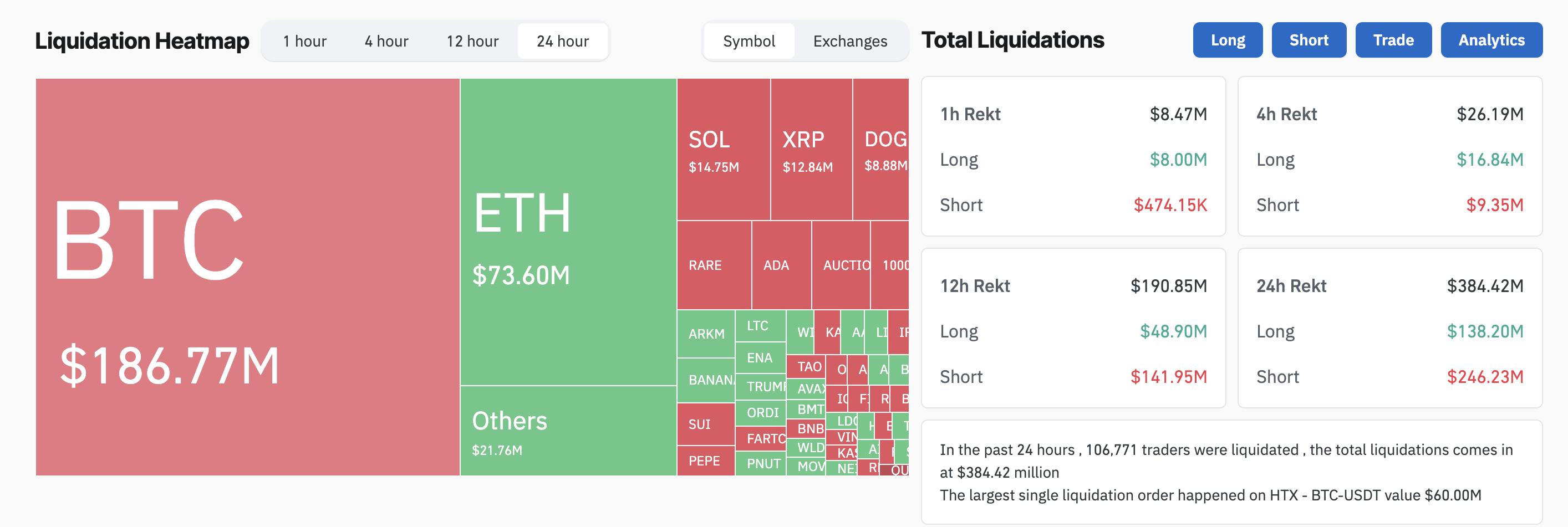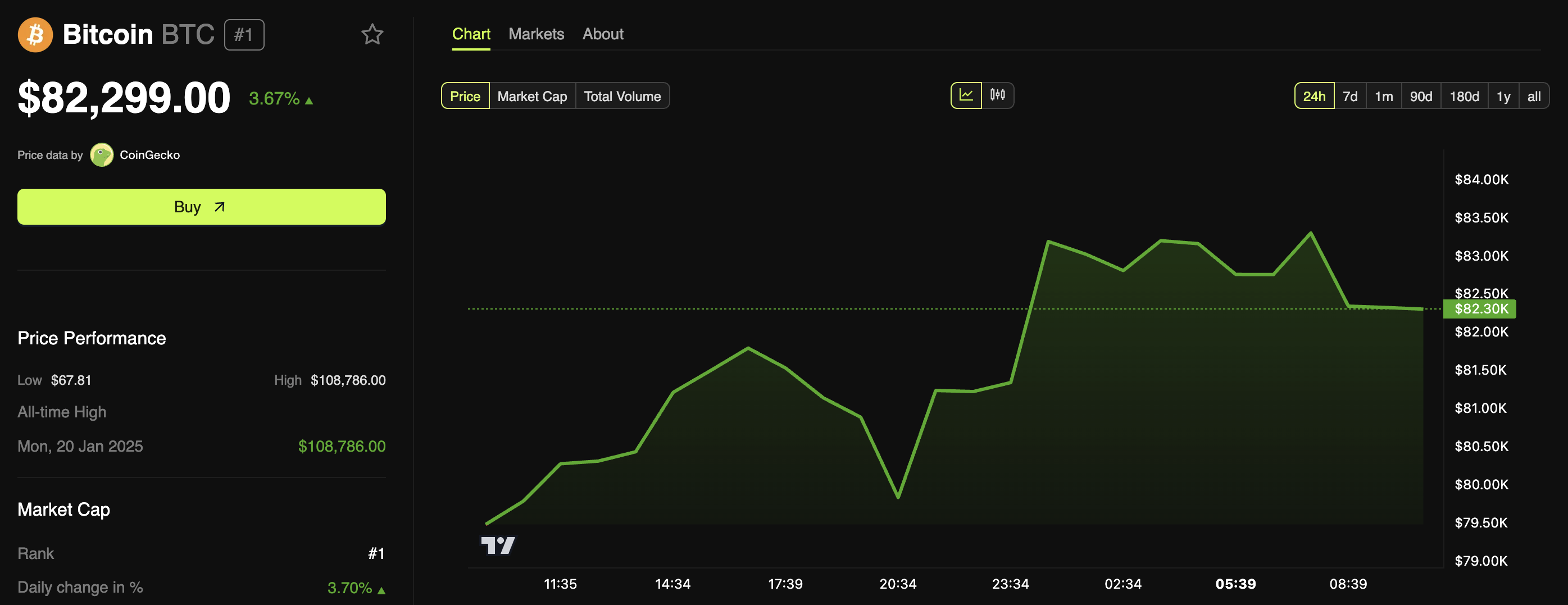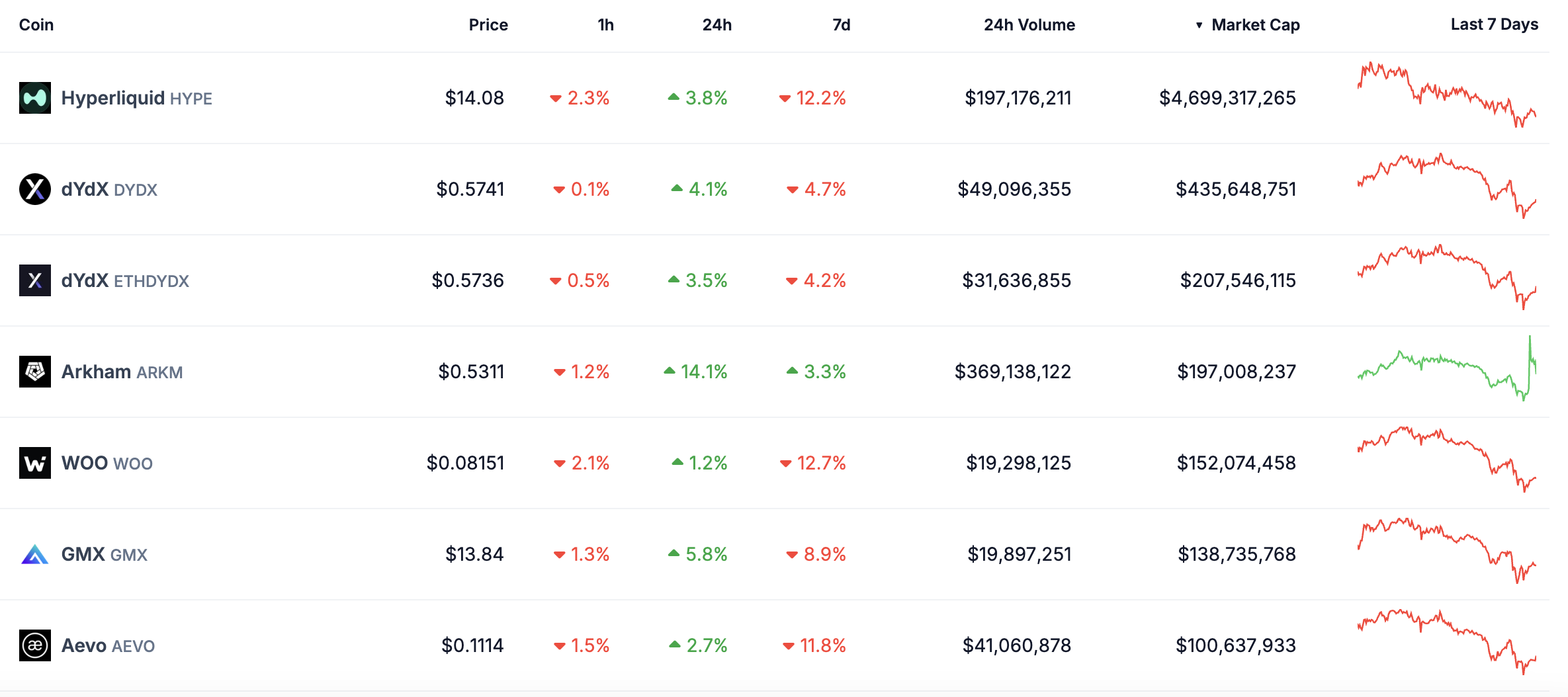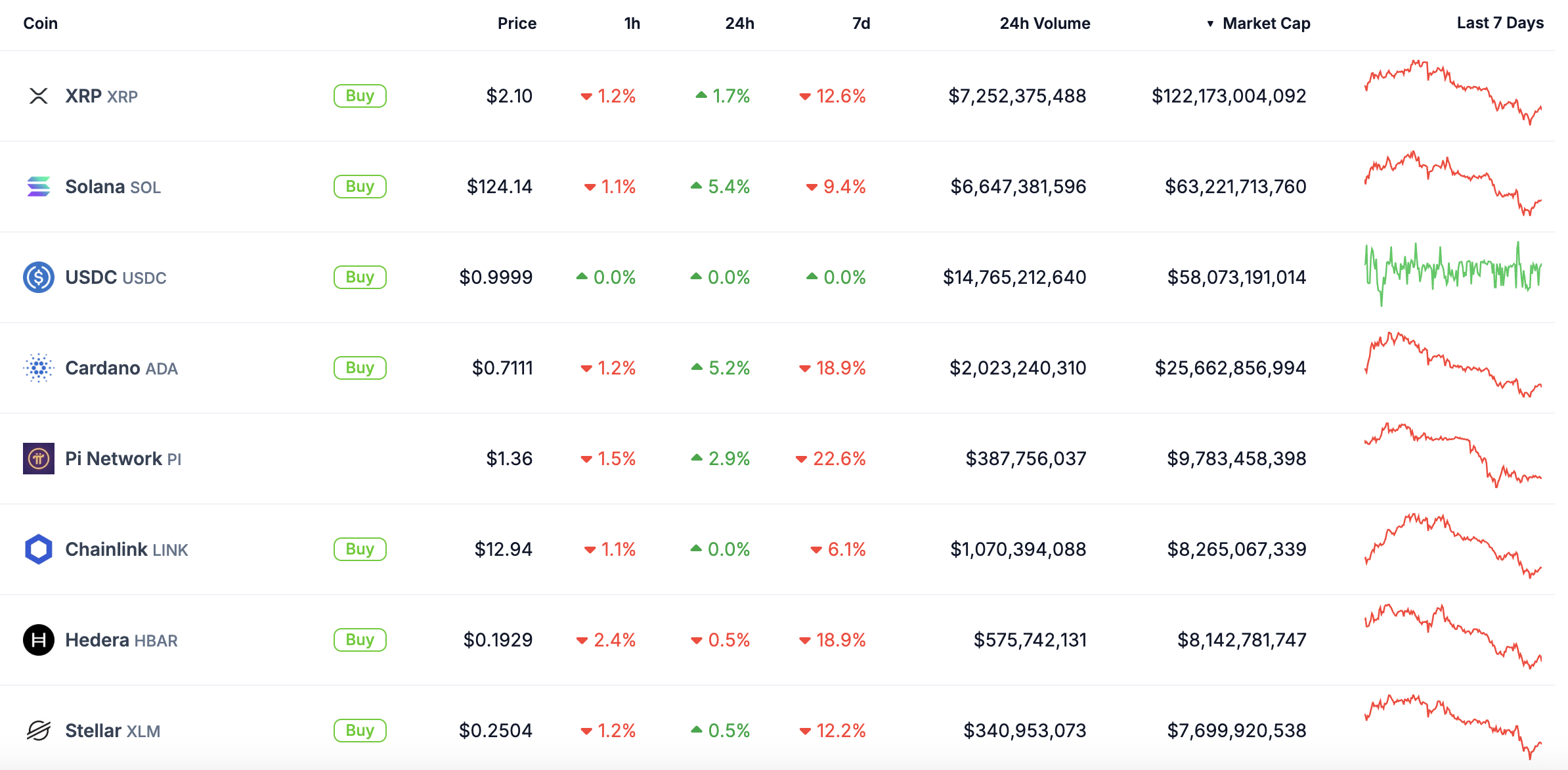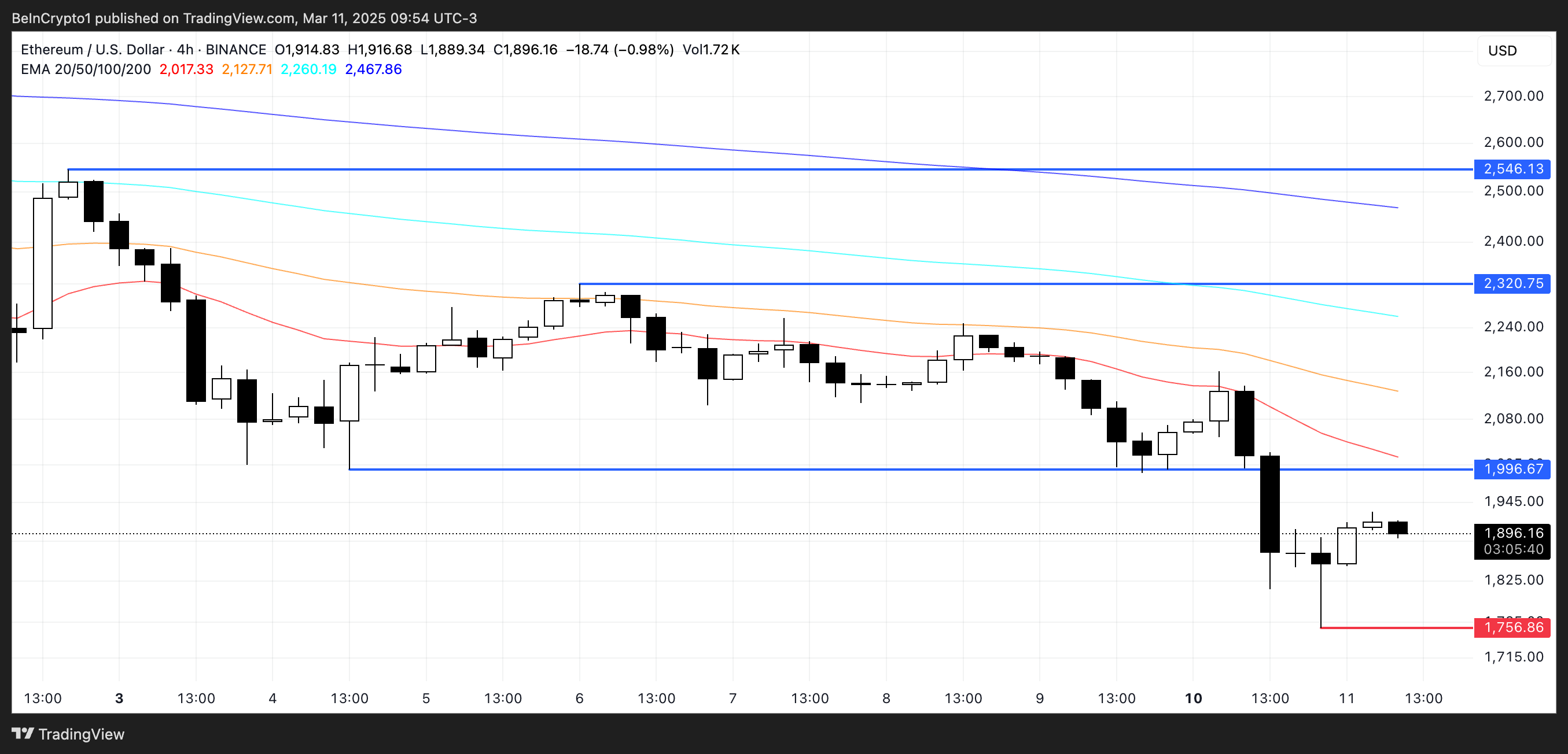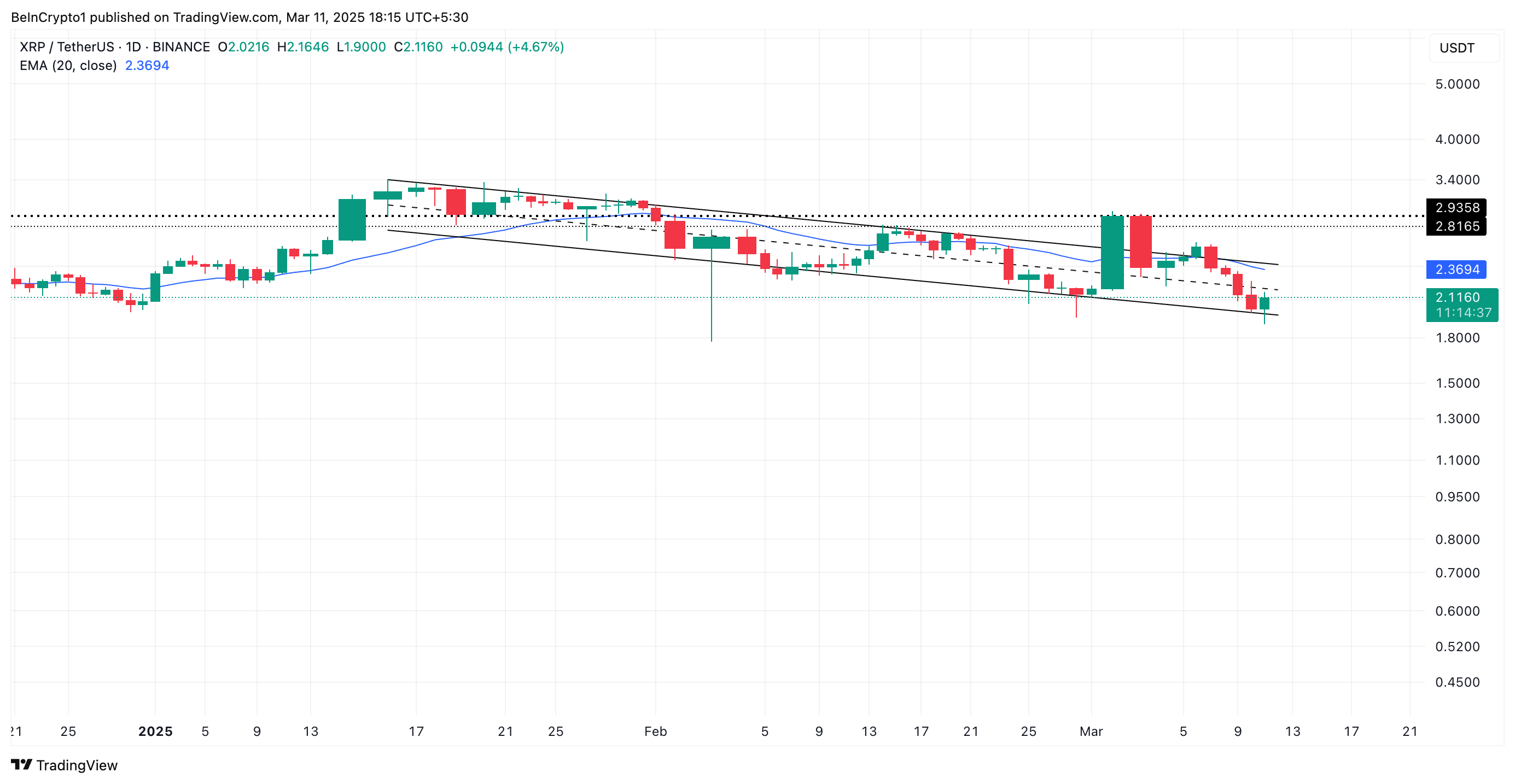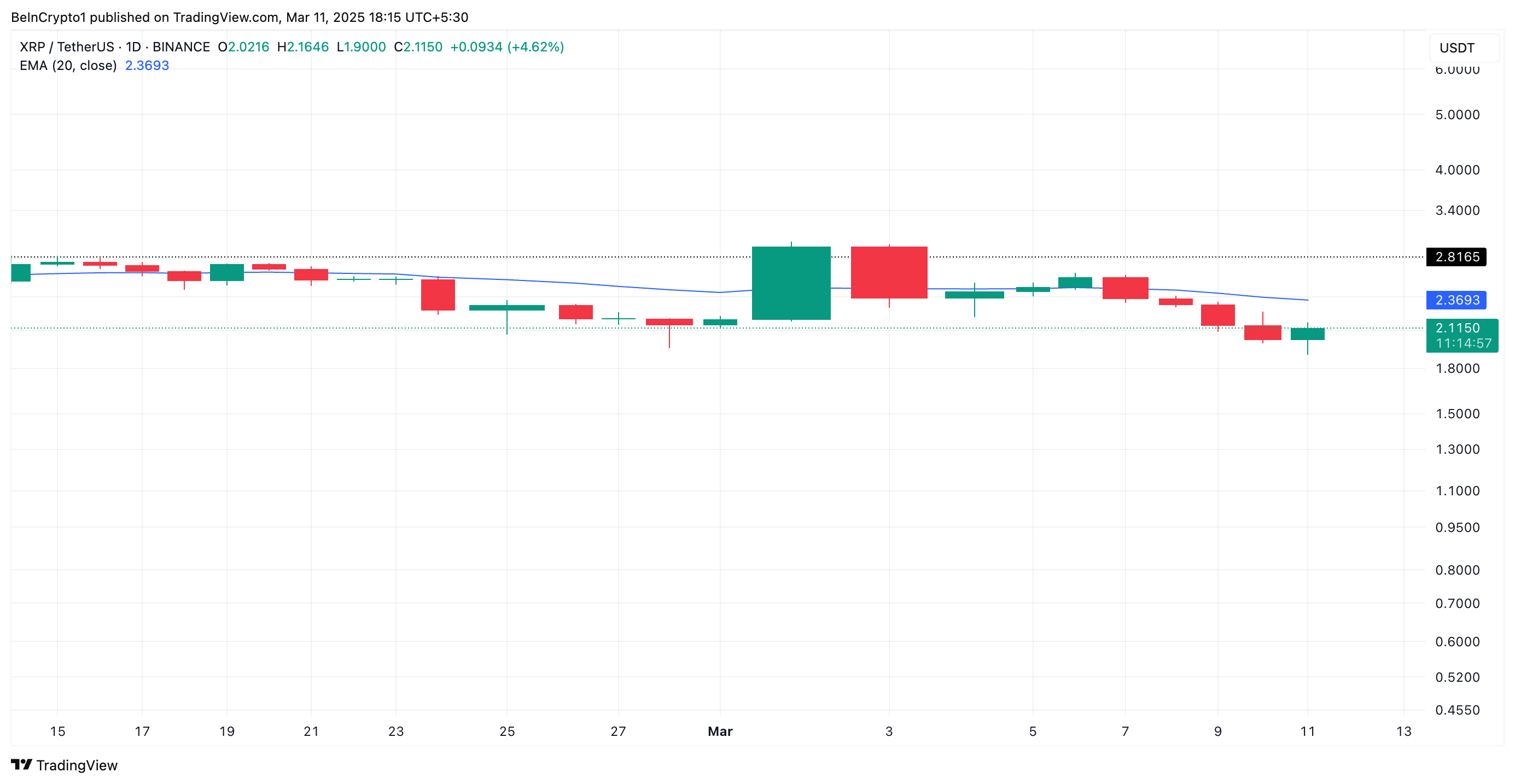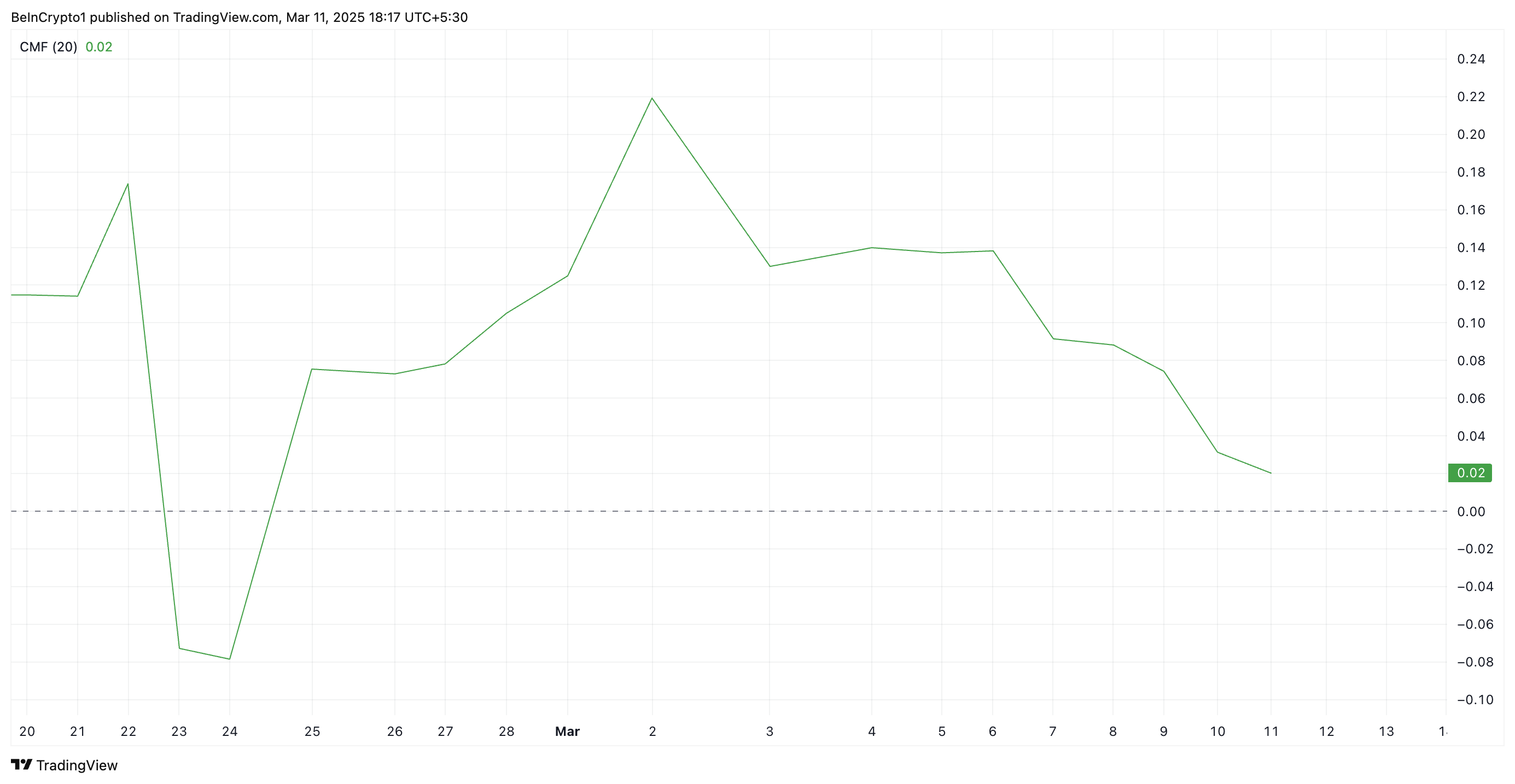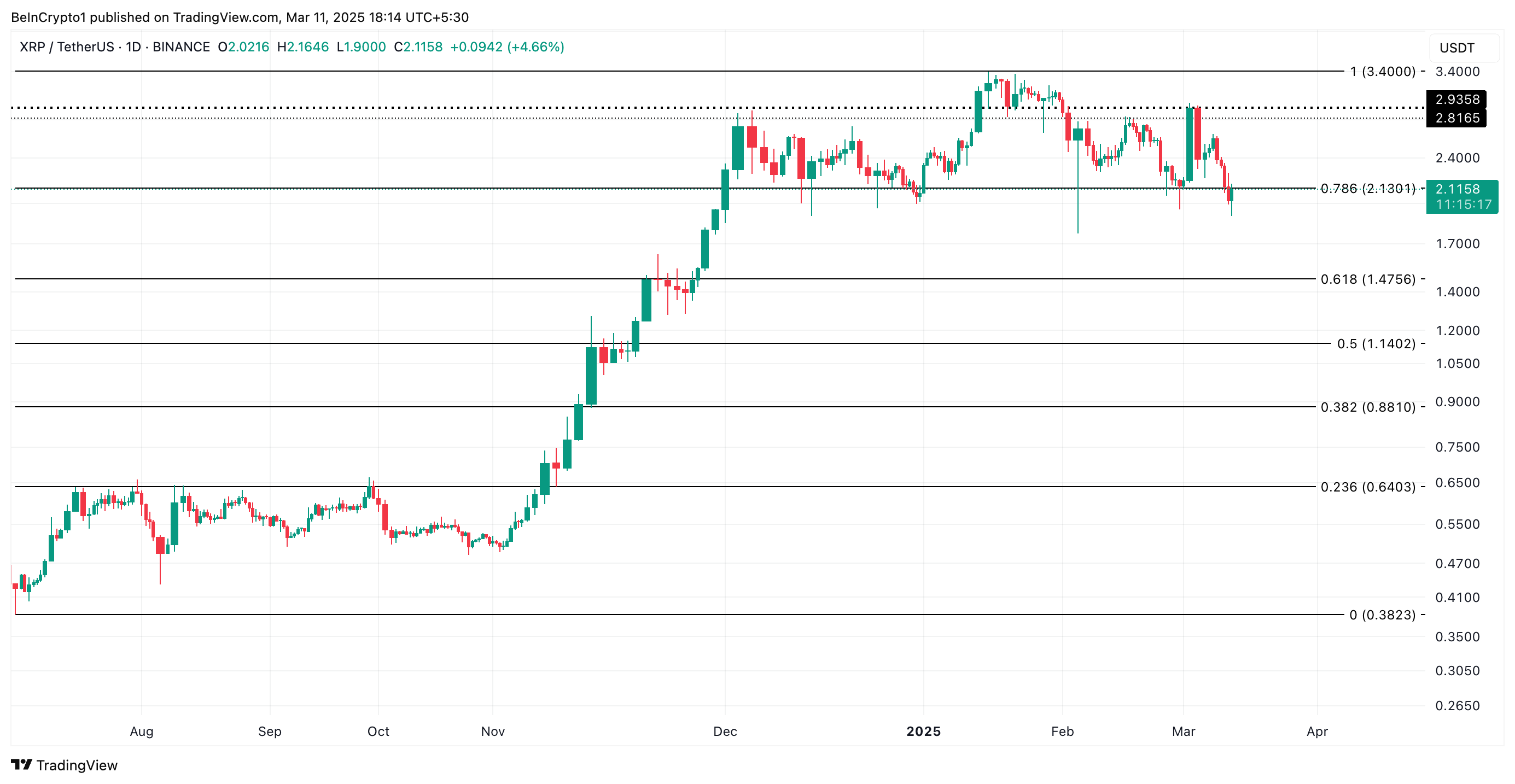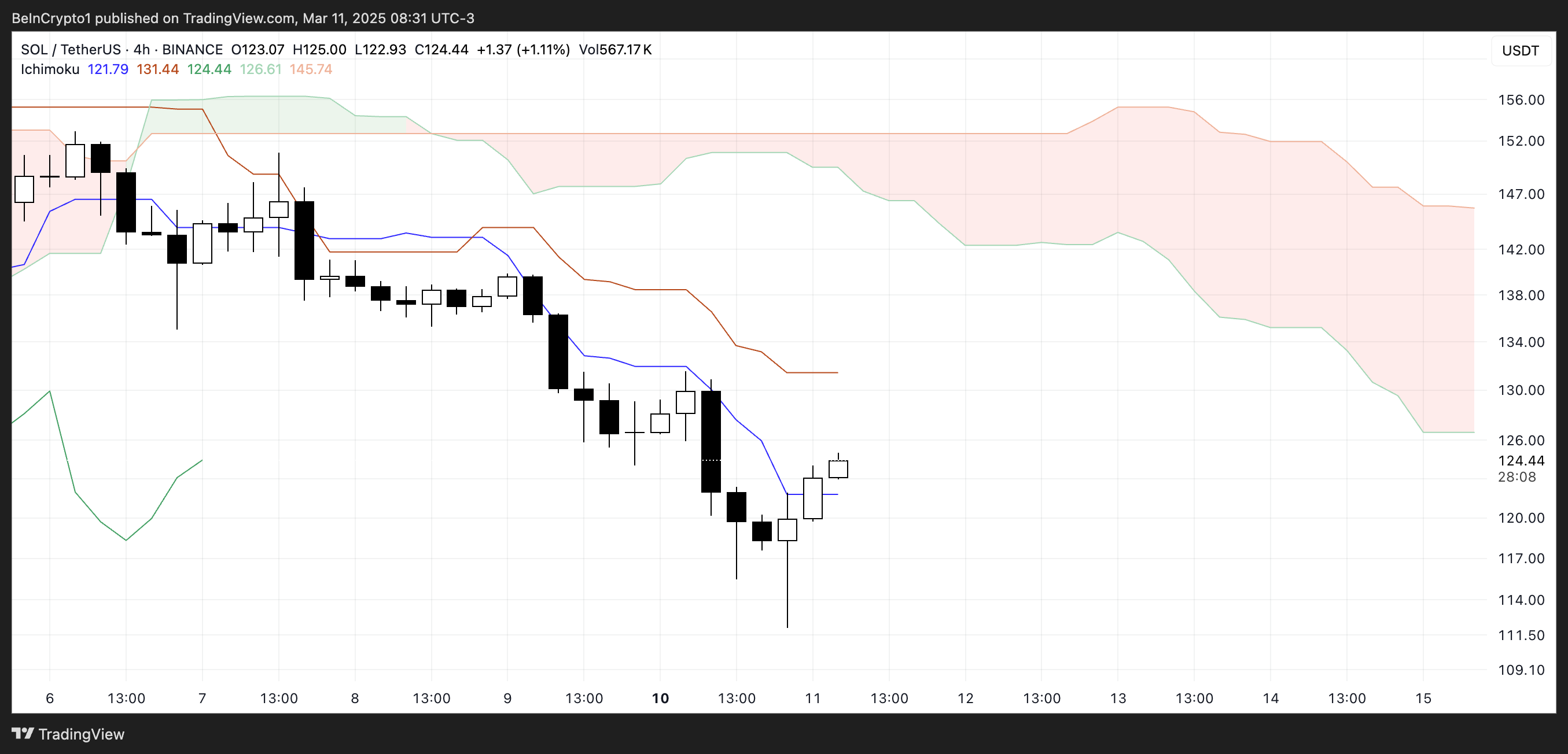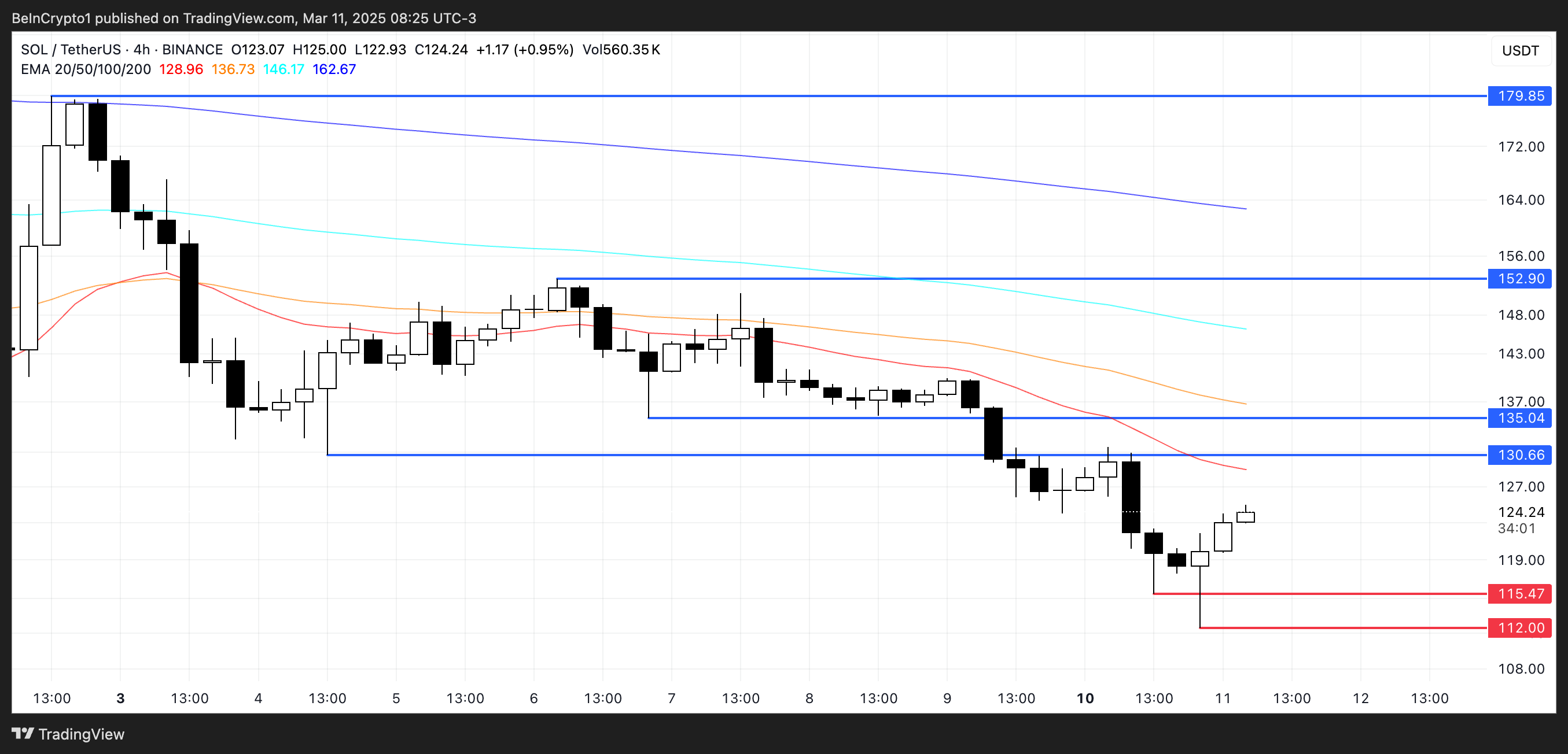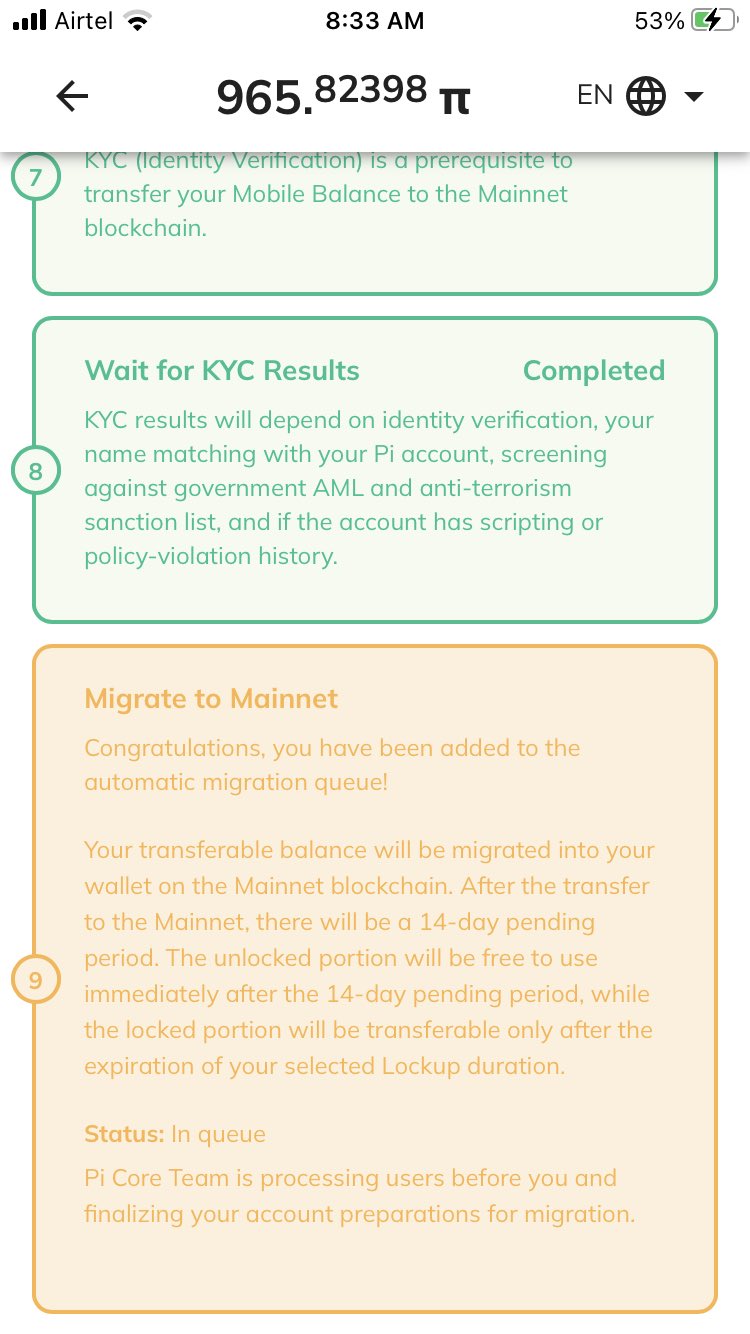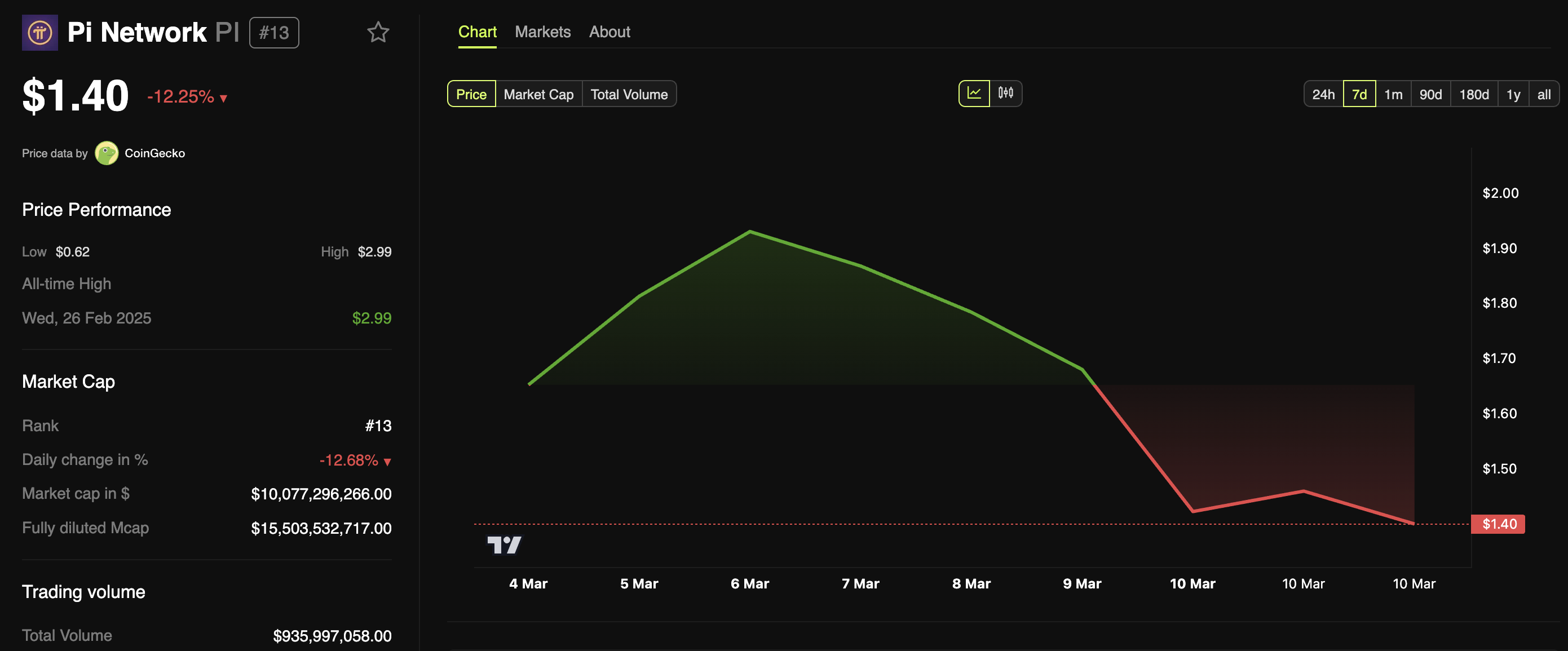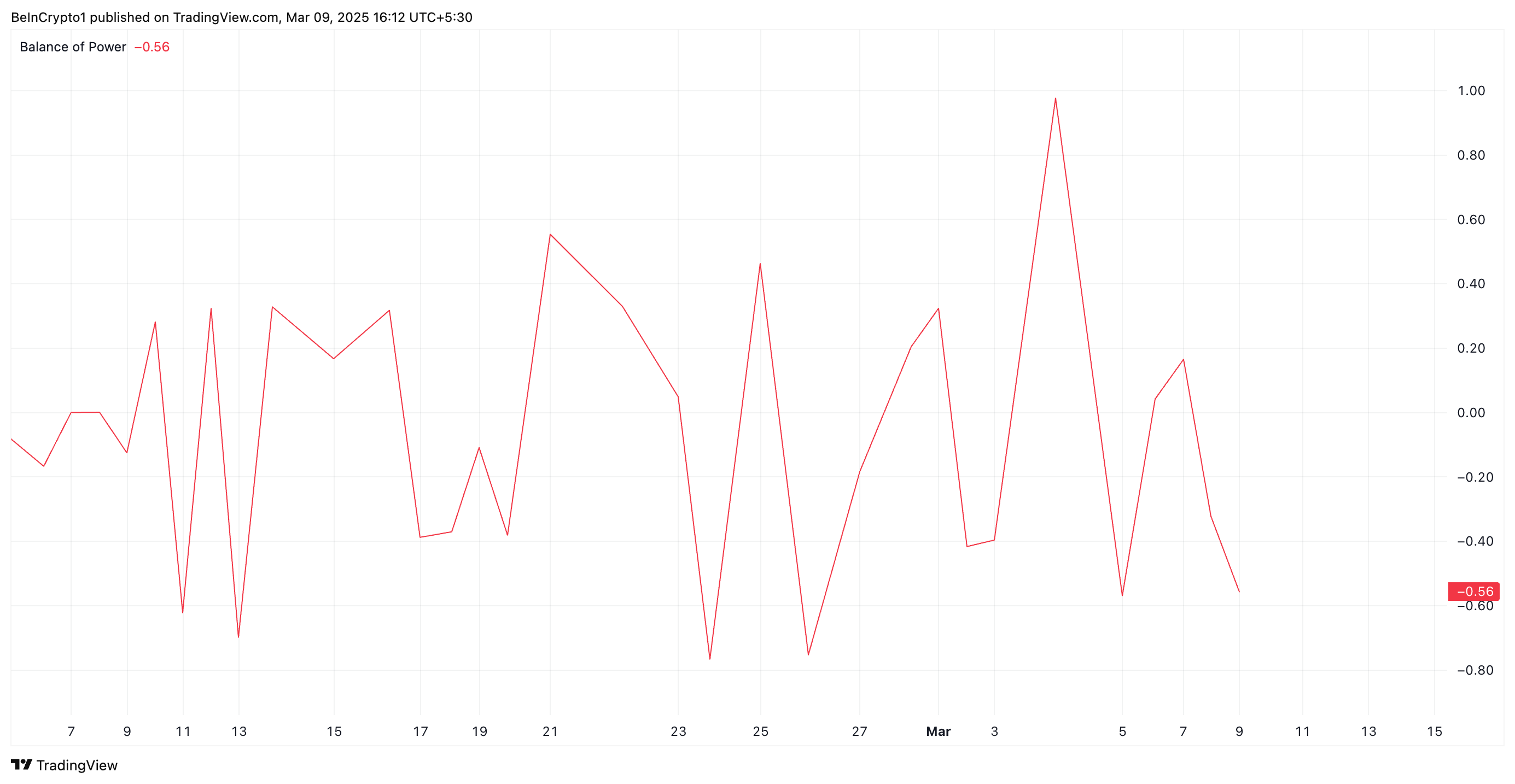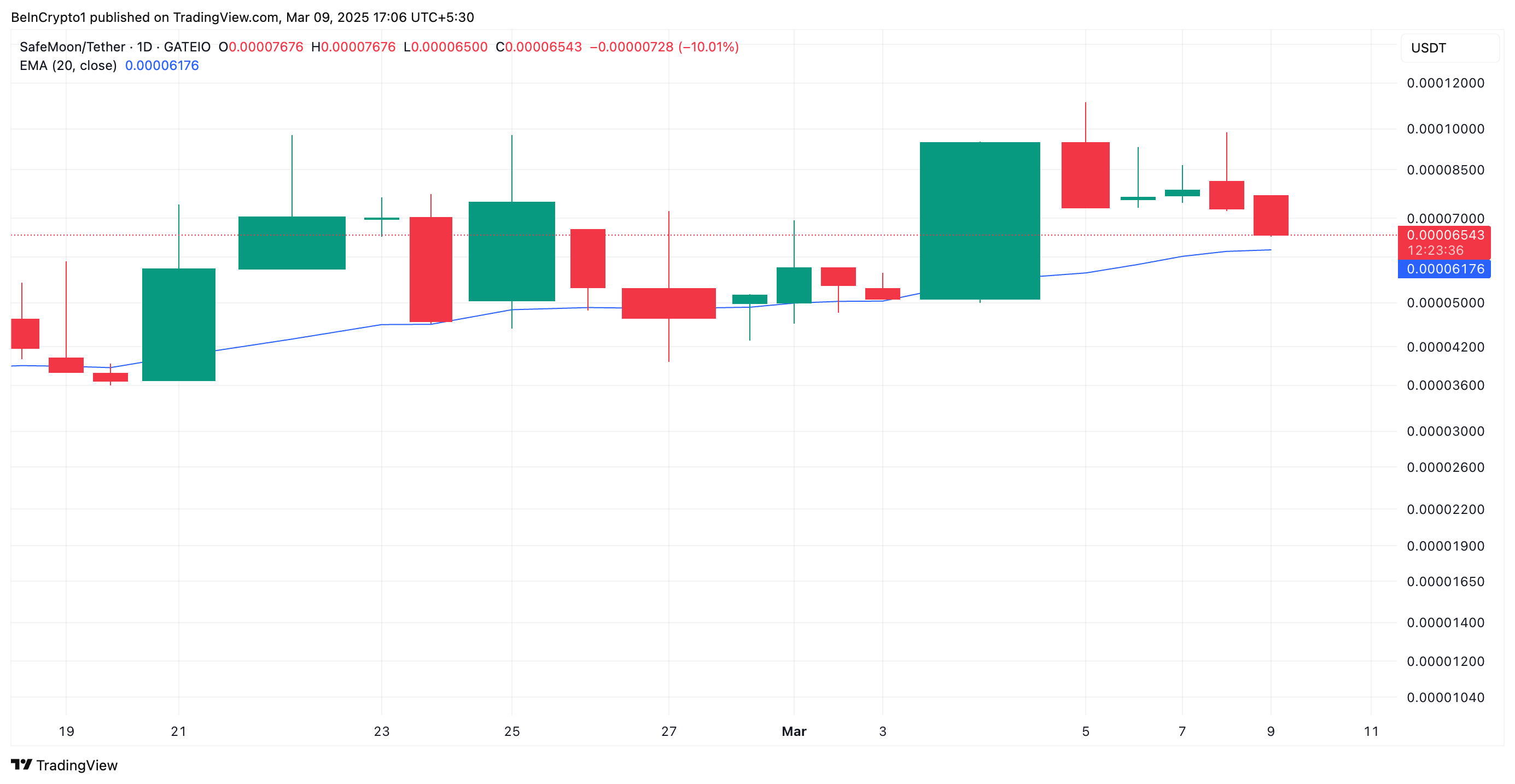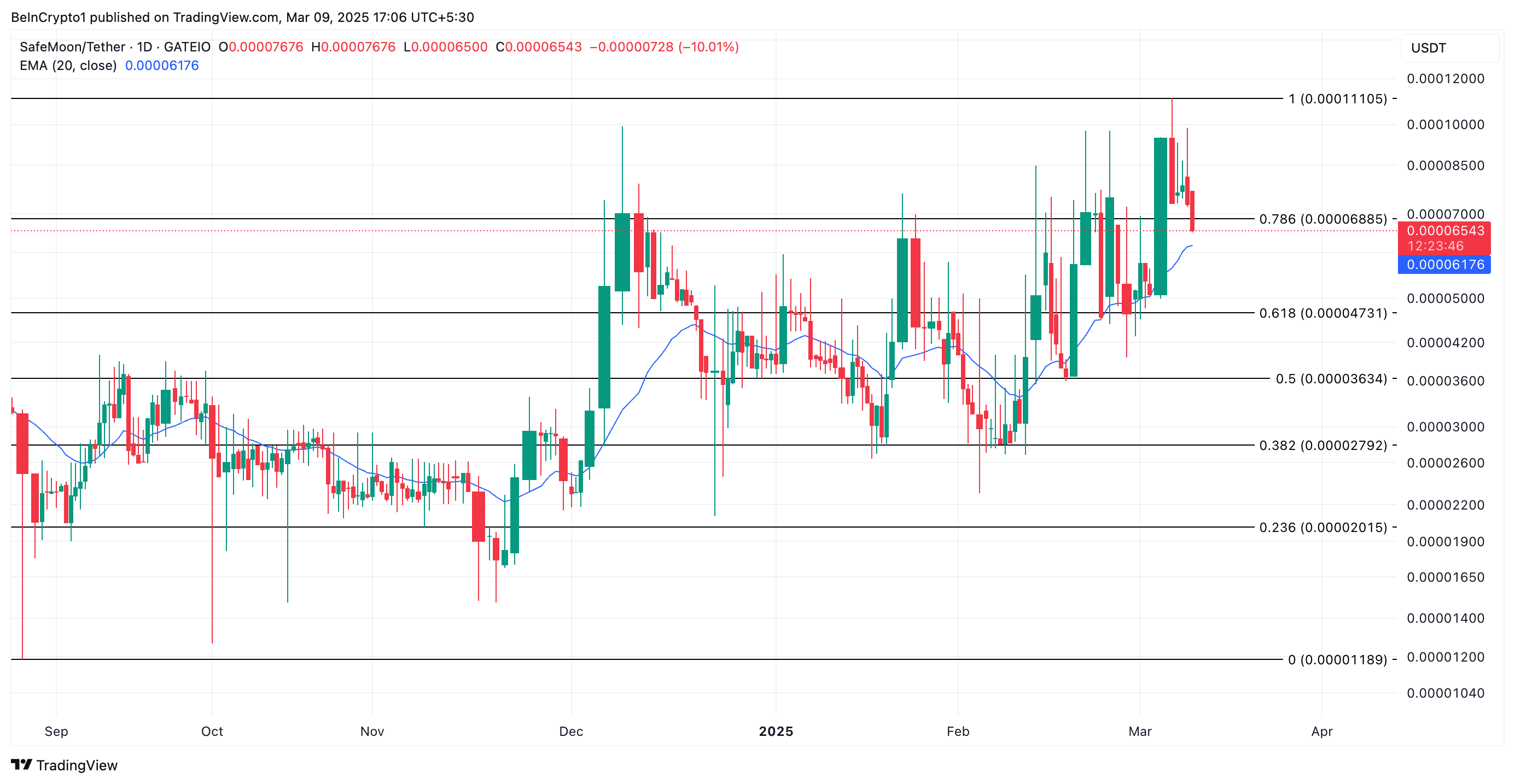Industry Leaders Discuss the Prospects of a Solana ETF Approval in 2025
Solana has emerged as a powerful presence in the crypto industry. Since its inception in 2020, the network has dominated the market, demonstrating remarkable levels of user engagement and practical utility, particularly in decentralized finance (DeFi). Many in the industry view it as the next natural contender to receive an ETF approval in the United States.
However, others are more cautious in their evaluations. BeInCrypto spoke with representatives from Gravity, Variant, and OKX to understand the areas where Solana is still lacking. Industry leaders referred to centralization, network reliability, and excessive regulation as points of contention for Solana’s ETF approval.
Bitcoin and Ethereum’s Precedent
The availability of exchange-traded funds (ETFs) for prominent cryptocurrencies has grown over the past year. These funds offer investors diversified investment opportunities and act as a bridge between traditional finance and the increasingly mainstream cryptocurrency market.
Bitcoin became the first cryptocurrency to have spot ETFs approved by the US Securities and Exchange Commission (SEC) in January 2024. The SEC’s approval of 11 such ETFs enabled investors to access Bitcoin through indirect investment. Last May, Ethereum closely followed suit with its own ETF approval.
Like Bitcoin, this approval proved a significant milestone for the industry . The success of both of these digital assets in achieving ETF approval after years of trial and error saw substantial inflows and drove prices to record highs, sparking optimism among investors and market analysts.
Solana positions itself to be the next cryptocurrency in line to seek its very own ETF approval. Yesterday marked the end of the 240-day review period for some of the first Solana ETF filings, notably from VanEck and 21Shares, which were filed in mid-2024.
Soon after the deadline expired, the SEC delayed ETF applications for Solana, XRP, Litecoin, and Dogecoin after facing recent criticism for its pro-crypto actions.
Meanwhile, the deadline for some filings, including Grayscale’s, was extended until October. Nonetheless, posts on X and some analytical reports suggest yesterday’s deadline as a date of interest for an initial or consolidated SEC response to several applications.
2025 Predictions and Market Expectations
The tentative approval of a Solana ETF has generated much debate across social media platforms. ETF President Nate Geraci formally predicted that 2025 would be the year of crypto ETFs and that Solana would receive its approval this year.
Per previous reports, former Trump White House Secretary Anthony Scaramucci expressed that, with a Trump reelection, Solana ETFs could gain approval during Q1 of 2025. According to his predictions, Solana would receive the SEC’s green light during the next two weeks.
Meanwhile, the prediction market Polymarket estimates an 82% chance that a Solana ETF will get approved in 2025.
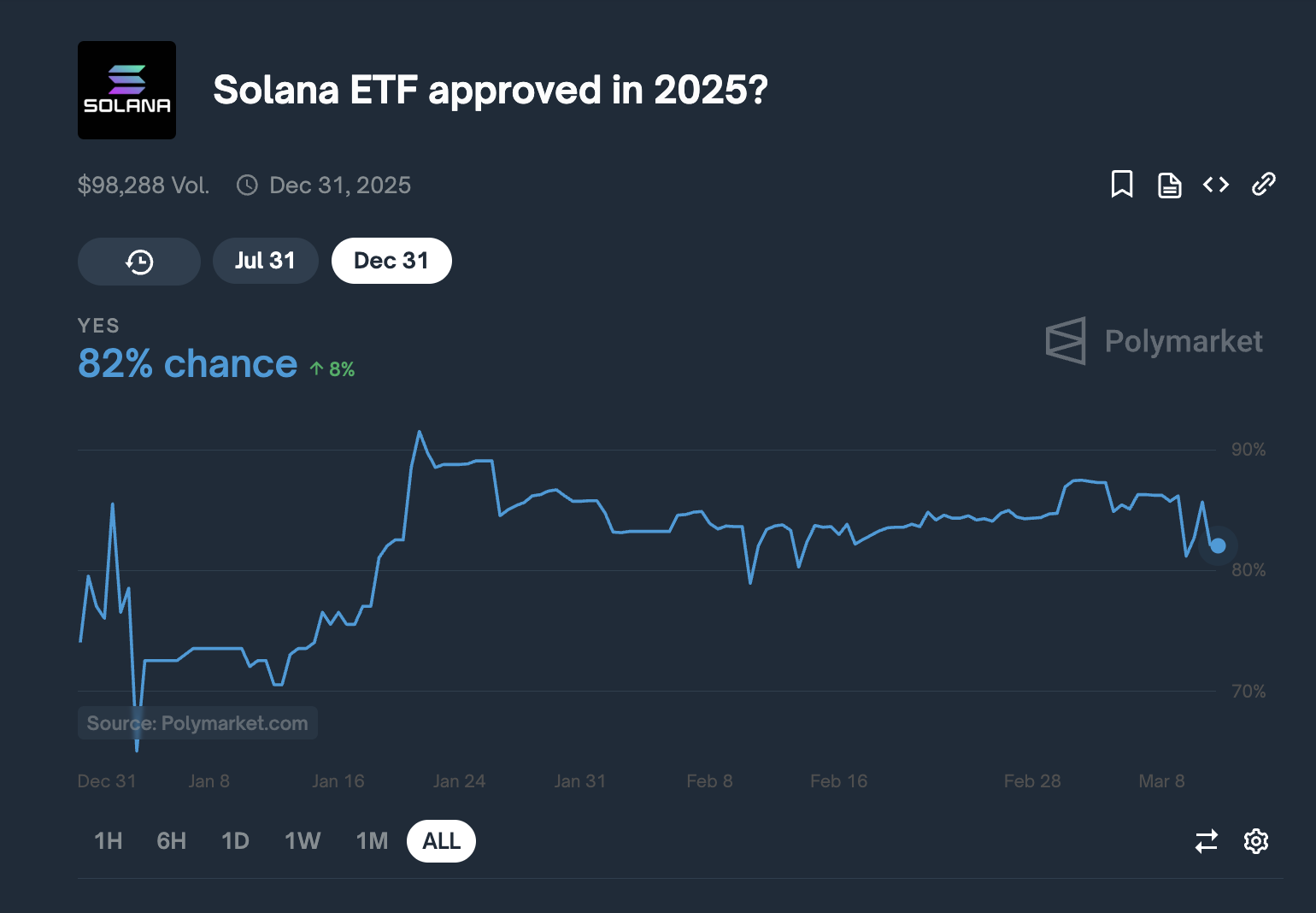
Several factors make an imminent Solana ETF approval seem plausible. Less than five years after the network launched, Solana quickly became a major player in the crypto industry, attracting users for its high transaction speeds and low gas fees.
“From a network perspective, Solana’s performance has been remarkable, now driving nearly 50% of all global DEX volume– a dominance that fundamentally reshapes the DeFi landscape. The blockchain is not just handling unprecedented transaction volumes… it’s transforming our understanding of blockchain scalability at scale,” Lennix Lai, Global Chief Commercial Officer at OKX told BeInCrypto.
Solana has established itself as a dynamic force in the crypto industry following a successful 2024.
A Messari report detailed particular growth in Solana’s final quarter across DeFi, liquid staking, NFTs, and institutional involvement. The total value locked (TVL) in Solana’s DeFi sector increased substantially, growing by 64% to $8.6 billion, which placed it behind Ethereum as the second-largest network based on TVL.
Solana’s positive performance, coupled with Donald Trump’s reelection to the US presidency, further amplified the crypto industry’s optimism over an ETF approval.
However, some industry experts have expressed more tempered expectations.
Experts Offer Tempered Expectations
A few days before Trump assumed the presidency, Bloomberg Intelligence analyst James Seyffart said Solana ETFs may not be launched in the US until 2026. He cited the SEC’s precedent of taking a lot of time to review filings as the cause for delay.
In another post, Bloomberg Senior ETF analyst Eric Balchunas said that ETF approvals for other cryptocurrencies were more likely to occur before Solana.
“We expect a wave of cryptocurrency ETFs next year, albeit not all at once. First out is likely the BTC + ETH combo ETFs, then prob Litecoin (bc its fork of btc = commodity), then HBAR (bc not labeled security) and then XRP/Solana (which have been labeled securities in pending lawsuits),” Balchunas said.
Balchunas further explained that complex legal issues around Solana, relating to its status as a security, need to be resolved before it can gain ETF approval. Consequently, he deemed the approval of Litecoin or Hedera ETFs more likely.
Uncertainty over whether Solana classifies as a security is a major driver fueling doubts over its ETF approval.
Security Classification Concerns
Martins Benkitis, co-founder and CEO of Gravity, explained that Solana’s regulatory classification complicates its path to approval.
“It’s no secret there’s currently a lack of precedent for Layer-1 blockchains beyond Bitcoin and Ethereum in the ETF space, this suggests cautious optimism but with higher regulatory hurdles. Bitcoin, being a commodity in the SEC’s eyes, and Ethereum’s gradual transition to PoS had different legal considerations. Solana, on the other hand, faces concerns over potential classification as a security due to its token distribution and foundation’s involvement,” Benkitis told BeInCrypto.
The SEC identified Solana as a security in lawsuits against Binance and Coinbase over the past two years, although these lawsuits have since been dropped. The SEC argued that these tokens could be considered investment contracts under the Howey Test.
While some interpreted the SEC’s lawsuit withdrawal as a softening stance on Solana’s security classification, others quickly challenged this assumption.
“There is no reason to think [the] SEC has decided SOL is a non-security. That they don’t want to do discovery on a dozen tokens in the Binance case appears to be a litigation tactic, not a change in policy,” said Jake Chervinsky, Chief Legal Officer at Variant, following the Binance lawsuit withdrawal in July 2024.
Others believe that a pro-crypto administration should be enough to influence the SEC to consider Solana as a non-security. Lai disagrees.
“The changing political landscape, particularly with Trump’s victory and pro-crypto stance, could create a more constructive environment for innovative blockchain platforms like Solana. However, the technical and market structure considerations will remain crucial regardless of administration changes,” he said.
In the meantime, there are several other requirements Solana must meet.
Requirements Beyond Market Demand
In determining whether an ETF is fit for approval, the SEC requires the product to meet strict regulatory standards. These include compliance and adherence to existing financial regulations, sufficient market demand from institutional and retail investors, reliable custody solutions, high liquidity levels, and rigorous asset performance and governance transparency.
On his part, Lai added other aspects to the list of considerations.
“While Polymarket shows high odds for 2025 approval, several critical factors suggest a more complex pathway: Solana’s technological architecture presents unique challenges with its PoS mechanism; The absence of CME futures raises liquidity and risk management concerns; Historical network downtime incidents need addressing; Centralization questions relative to BTC and ETH remain unresolved; Institutional interest hasn’t matched BTC and ETH levels despite the network driving 48% of global DEX volume; [and] the temporary nature of trending themes suggests caution in using current volumes as primary indicators,” Lai told BeInCrypto.
Concerns about centralization and scalability have long been discussed regarding Solana, even outside of discussions over an ETF approval.
Addressing Network Reliability
In certain aspects, Solana faces more obstacles than in the case of Bitcoin and Ethereum, one of which is market manipulation.
Since 2021, Solana has suffered over a dozen network outages varying in severity. These outages have jeopardized the network’s reputation as stable and reliable– two strongly considered characteristics during the ETF approval process.
“From a market making standpoint, network reliability is crucial as any downtime or congestion can significantly impact trading operations and order execution,” Benkitis affirmed.
However, Solana has successfully curbed the number of outages it has experienced. Once notorious for the frequency of its shutdowns, the last time Solana experienced one was in February 2024.
Meanwhile, developers designed Solana’s upcoming Firedancer validator client to improve network stability and transaction processing. Its distinct codebase offers greater resilience against widespread outages and will enhance Solana’s performance.
Yet, Solana must also mitigate centralization concerns to improve its chances of obtaining ETF approval.
Centralization Concerns
Solana’s validator node requirements, which demand significant hardware investments, can create barriers to entry. These obstacles can potentially concentrate power within the network among those capable of affording the necessary infrastructure.
In turn, the protocol’s limited number of validators compared to other networks raises concerns over centralization. For context, while Solana currently has around 2,000 active validators, Ethereum passed the one million benchmark last year—the largest number recorded by any blockchain network.
Though Solana’s hardware reliance speeds up the network, it also raises decentralization concerns. Benkitis factored this aspect into his evaluation of an ETF approval.
“Strong institutional demand can bolster Solana’s case, providing more liquidity and market depth, which market makers will welcome with open arms, but it might not be enough to counterbalance regulatory concerns surrounding security classifications and centralisation,” he said.
Other considerations also remain.
Futures Market Infrastructure and Volatility
Its currently underdeveloped futures market infrastructure further complicates Solana’s viability as an ETF candidate.
Its filings were unprecedented because the network did not have a previously established futures market. This factor was crucial in determining an ETF approval for Bitcoin and Ethereum.
“The lack of CME futures and institutional frameworks comparable to BTC/ETH could influence [the SEC’s] evaluation,” Lai said.
He added that the proliferation of meme tokens minted on Solana could present themselves as a potential roadblock.
“Market reactions reflect Solana’s emergence as the primary driver of this cycle, with DEX volumes exceeding $100 billion and dominating major aggregators. However, I believe the temporary nature of trending themes suggests continued volatility. While technological advancement and growing institutional adoption may provide stronger foundations, we need to maintain perspective on the cyclical nature of crypto trends,” Lai said.
This more recent development in Solana’s attraction also brings its set of downsides.
Meme Coin Influence and Regulatory Concerns
The expanding meme coin market on Solana partially explains its popularity. Platforms like Pump.fun allow anyone to launch their tokens, and this design has even led to celebrities launching their tokens on the platform.
More recently, political figures like Donald Trump and Argentine president Javier Milei have also launched meme tokens on Solana platforms. Yet, these activities have proven to be high-risk. In many cases, meme coin investments have caused smaller retailers millions of dollars in losses.
Benkitis said that the SEC might frown upon the speculative nature of these trading activities.
“While an ETF approval could unlock liquidity opportunities, the market’s heavy dependence on speculative sentiment calls for a measured and cautious approach,” he said.
With so many considerations, approving a Solana ETF in 2025 is far from guaranteed. The SEC’s eventual decision will be a defining moment for the network and the broader crypto industry.
The post Industry Leaders Discuss the Prospects of a Solana ETF Approval in 2025 appeared first on BeInCrypto.



